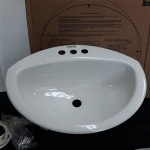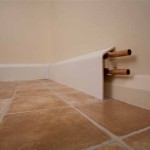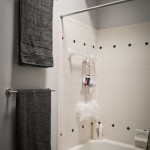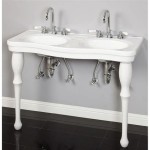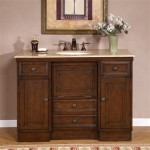How to Build Your Own Floating Bathroom Vanity
A floating bathroom vanity offers a sleek, modern aesthetic and can make a small bathroom feel more spacious. Though it might appear complex, building your own floating vanity is a manageable DIY project for those with basic carpentry skills. This guide will walk you through the process step-by-step, enabling you to create a unique and personalized vanity for your bathroom.
Planning & Preparation
Before diving into construction, meticulous planning is crucial. This includes determining the vanity's dimensions, choosing the right materials, and gathering the necessary tools. The vanity's size should be dictated by the available space and desired storage capacity. For the countertop, consider materials like granite, marble, quartz, or laminate, each offering distinct aesthetics and durability. The cabinet can be crafted from plywood or MDF, ensuring stability and moisture resistance with a proper sealant or paint.
To ensure a smooth and successful build, gather the following tools: *
Measuring tape:
For accurate dimensions and cuts. *Circular saw or jigsaw:
For cutting the wood panels. *Drill:
To create holes for hardware and mounting brackets. *Screwdriver:
For assembling the cabinet and attaching hardware. *Level:
To ensure the vanity is perfectly aligned. *Sandpaper:
To smooth out rough edges and prepare for finishing. *Wood glue:
To securely join the cabinet components. *Clamps:
To hold pieces together during assembly and while glue dries. *Safety gear:
Eye protection, gloves, and dust mask are essential for protecting yourself during the construction process.Building the Cabinet
Once the planning stage is complete, it's time to construct the vanity cabinet. 1.
Cut the wood panels:
Using the measured dimensions, precisely cut the panels for the vanity's base, sides, back, and shelves. If using plywood, ensure the grain runs in the same direction for all panels. 2.Assemble the cabinet:
Use wood glue and screws to securely join the cut panels, creating a sturdy box. Clamp the pieces together while the glue dries to ensure a strong bond. 3.Add shelves and drawers:
Depending on the desired storage configuration, install shelves or drawers inside the cabinet. Ensure they are firmly attached and aligned for smooth operation. 4.Finish the cabinet:
Sand the entire cabinet to remove any rough edges and debris. Apply sealant or primer to prevent moisture damage and create a smooth surface. Finally, paint or stain the cabinet to match the bathroom's aesthetic.Installing the Floating Vanity
Once the cabinet is complete, it's time to attach it to the wall. This involves the following steps: 1.
Choose the mounting position:
Determine the desired location for the vanity, considering the placement of plumbing fixtures and desired proximity to the mirror. 2.Mark the wall:
Use a level to mark the desired position of the vanity on the wall and ensure it is level. 3.Install the mounting brackets:
Attach the mounting brackets to the wall using appropriate anchors or screws, ensuring they are securely fixed. 4.Attach the vanity to the brackets:
Carefully lift the vanity and attach it to the mounting brackets. Ensure the vanity is level and securely fastened before proceeding. 5.Install the countertop:
After securing the vanity, install the countertop, ensuring it is properly aligned and fastened. 6.Install the sink and faucet:
Install the sink and faucet, ensuring they are plumbed correctly and function flawlessly. 7.Add finishing touches:
Finish the installation by adding cabinet hardware, mirrors, and any additional accessories.Key Considerations
While building your own floating vanity offers significant customization and cost-effectiveness, several crucial considerations must be addressed:
1.
Plumbing:
Ensure the vanity's plumbing is correctly installed and functions correctly. This may involve hiring a qualified plumber for assistance if you are inexperienced with plumbing.2.
Wall Strength:
The wall must be strong enough to support the weight of the vanity. Assess the wall material and consult a building professional if necessary to ensure adequate support.3.
Water Resistance:
Choose materials resistant to moisture and humidity, including plywood treated with a sealant, moisture-resistant paint, and sealant for the countertop. Proper ventilation in the bathroom is also crucial for preventing moisture build-up.
Diy Floating Bathroom Vanity Remodelando La Casa

How To Build A Diy Modern Floating Vanity Or Tv Console

Diy Floating Bathroom Vanity Remodelando La Casa

Diy Floating Wood Vanity Step By Infarrantly Creative

How To Build A Diy Floating Vanity With Wood For Less Than 30

How To Build A Diy Modern Floating Vanity Or Tv Console

Diy Bathroom Floating Vanity With Drawers Hydrangea Treehouse

How To Build A Diy Modern Floating Vanity Or Tv Console

Diy Floating Wood Vanity Step By Infarrantly Creative

Home Dzine Bathrooms Make A Floating Bathroom Vanity
Related Posts
